
The second-sideface definitive issue had been surfaced printed and the Government Printer in Wellington did not have the facilities for recess printing. There was therefore a delay before the printing of the first pictorials was transferred to New Zealand.
Local issues, 1899
Instead of sending out the plates used in London, Waterlow produced a duplicate set of plates to be sent to New Zealand. The new plates for the ½d, 1d, 2d and 4d values had been produced before the changes in these values had been agreed and so they could not be used. Production of these values locally had to wait until revised plates had been produced and sent out.
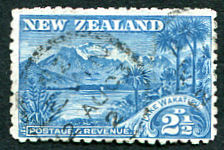
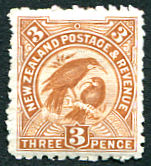
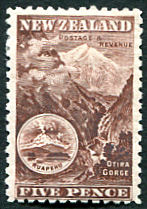
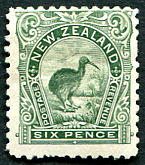
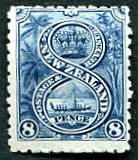
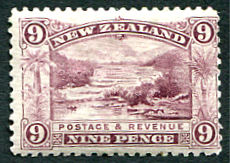
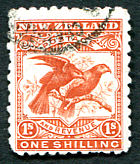
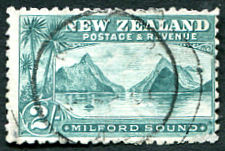
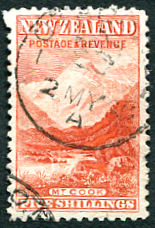
The stamps were issued on thick unwatermarked paper and were perf 11.
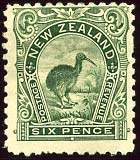
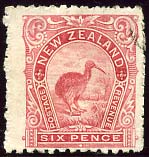
Stamps from the local printings of the other values were issued as required; the 6d and 8d in May 1899, the 2½d and 5d in June, the 2/- and 5/- in July, the 9d in August while the 3d and 1/- were not issued until May 1900.
The stamps were issued on thick unwatermarked paper and
were perf 11.
The colours were initially the same as in the London prints although
in May 1900, the colour of the 6d was changed from green to red.
The new designs
The 4d value was in the same design as the original 1d although it was smaller in size. Despite this, it was still printed in sheets of 80 just like the original 1d. It was printed on the thick unwatermarked paper used for the other values. It was initially issued in August 1899, but as the 1d with the same design was still in use, the 4d was withdrawn and then reissued with the other new designs in March 1900.
The new ½d, 1d and 2d stamps were issued in March 1900. Their colours had been changed as well as their size and designs and they were printed in sheets of 240 on paper watermarked with a double-lined NZ and star and perf 11.
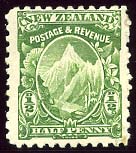
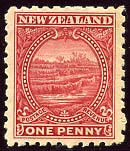
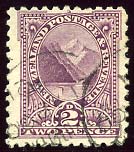
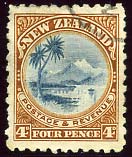
The new designs
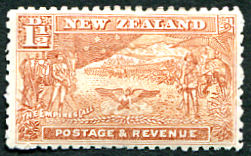
The 1d value was replaced by the 1d Universal in January 1901.
A new 1½d value to mark New Zealand sending troops to the Boer war was issued on 7 December 1900 in sheets of 120 on paper watermarked with a double-lined NZ and star and perf 11.
The plate was made by Parsons Bros in New York although they were printed by the Government Printer in Wellington.
Cowan watermarked paper
The paper was changed to one watermarked NZ and star in 1902/1903. The dates of issue for the different values depending on when the stocks on unwatermarked paper ran out. This was the first use of the Cowan paper that was to remain the paper for New Zealand definitives until 1935.
With the exception of the 1½d and 2d values, the stamps were initially issued perf 11 although the ½d is rare in that perforation.
Perf 14
The ½d and 2d values perf 14 were issued in 1902, the 4d in 1903, the 1½d and 8d in 1907 while the others were issued in 1906. The stamps perf 14 are shown below.
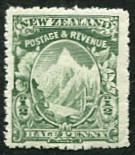
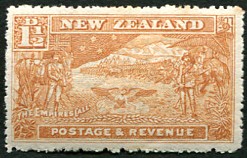
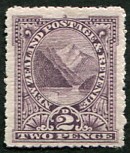
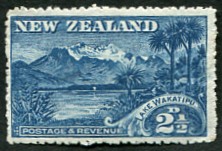
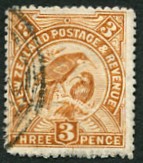
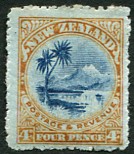
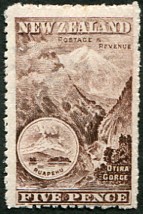
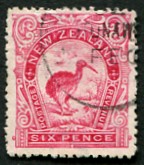
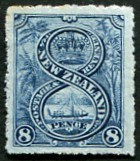
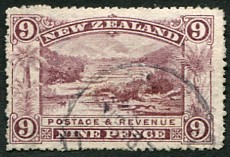
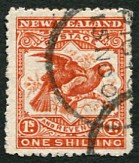
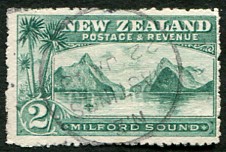
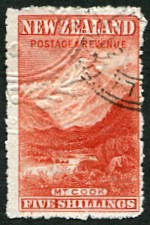
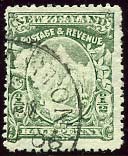
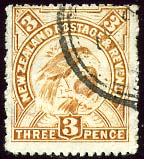
The following applies to both perforations. The 3d, 5d, 6d, 8d and 1s values have the watermark sideways. th 5s value exists with both upright and sideways watermarks. Variations in the sideways watermark: inverted, reversed and inverted-reversed are relatively common.
By 1907, some of the values, especially the ½d and 3d were
becoming very worn and new plates were required.
In the ½d value a large worn area developed to the left
of POSTAGE.
Laid paper
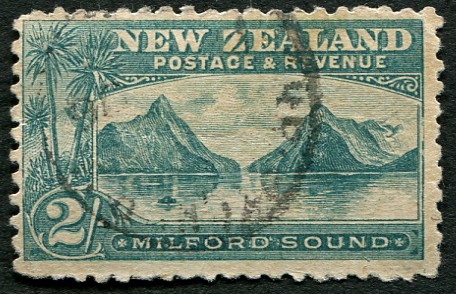
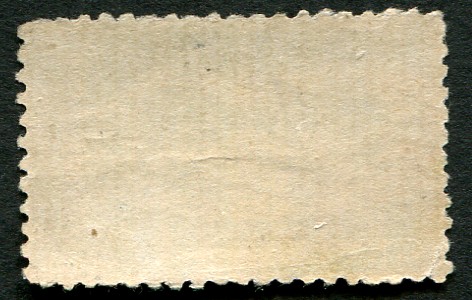
In early 1903 there was a need for a small printing of the 2s value.
As the stock of the Cowan paper was low, an unwatermarked paper from stock was used.
It is described as 'laid paper' and the back has vertical parallel lines that have all the appearance of a watermark
as can be seen in the example.
The colour was blue green.
The above information is taken from:
The Postage Stamps of New Zealand Vol 1, published by the
Royal Philatelic Society of New Zealand in 1938.
The 1898 Pictorial Issue of New Zealand, D. Diamond, published by the
New Zealand Society of Great Britain in 2014.
All scans were made by the author.